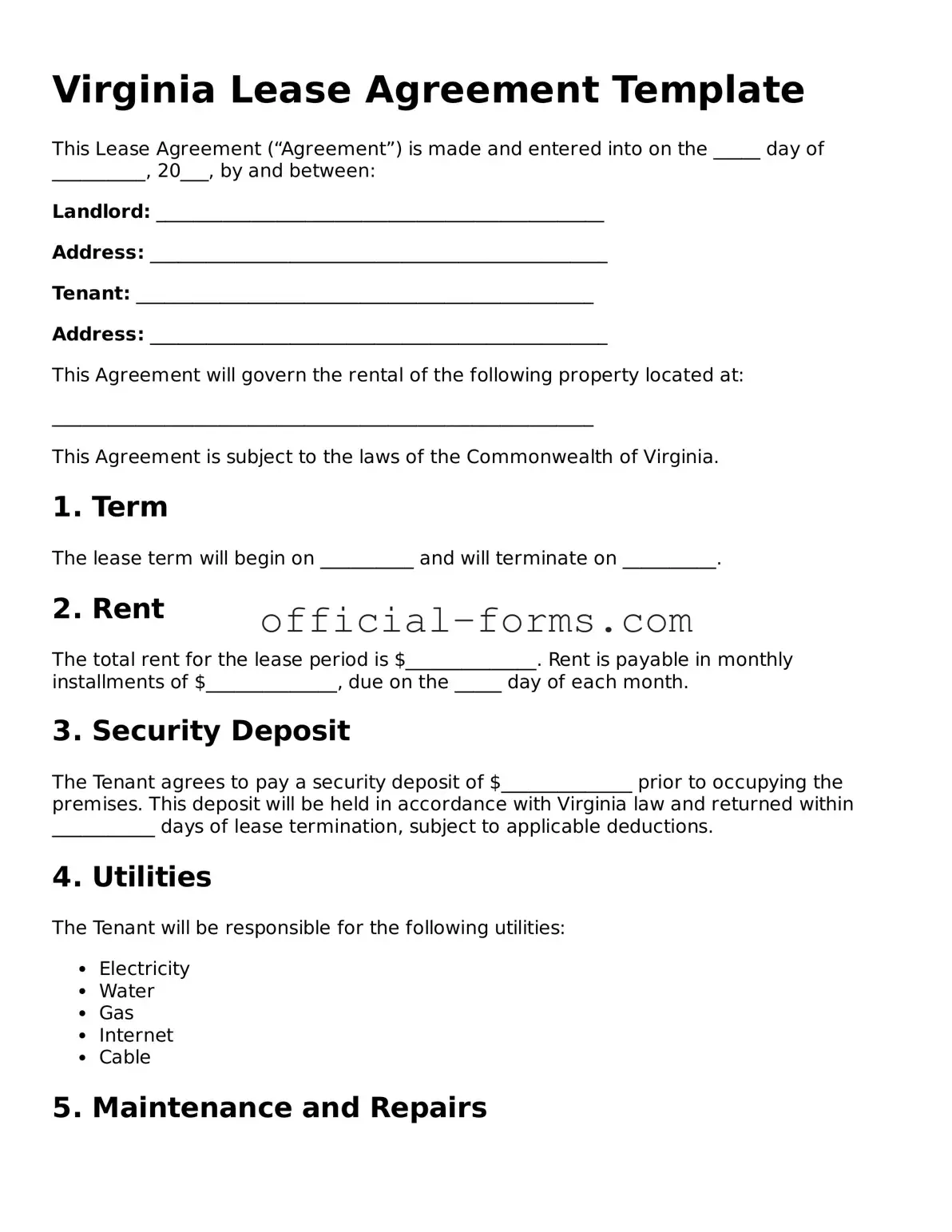Filling out the Virginia Lease Agreement form can be a straightforward process, but many people make common mistakes that can lead to confusion or legal issues later on. One frequent error is failing to include the correct names of all parties involved. It’s crucial that all tenants and landlords are accurately named to avoid disputes over who is responsible for the lease obligations.
Another common mistake is neglecting to specify the rental amount and payment due date. This information is vital for both parties. If it is unclear, it can lead to misunderstandings about when rent is due and how much should be paid.
People often overlook the importance of the lease term. Whether it’s a month-to-month agreement or a fixed-term lease, clearly stating the duration is essential. Without this information, tenants may find themselves in a precarious situation if they assume the lease is longer than it actually is.
Additionally, individuals sometimes fail to read the fine print regarding maintenance responsibilities. The lease should clearly outline who is responsible for repairs and maintenance. If this is vague or missing, it can lead to disputes about who should handle issues like plumbing or electrical problems.
Another mistake involves not including the security deposit terms. This section should specify the amount of the deposit, the conditions under which it may be withheld, and the timeline for its return. Omitting this information can create significant issues when the lease ends.
People also frequently forget to include any additional fees or charges. If there are any extra costs, such as pet fees or parking fees, they should be explicitly stated in the agreement. Failing to do so can lead to unexpected expenses for tenants.
Lastly, individuals often neglect to sign and date the lease. A lease agreement is not legally binding until all parties have signed it. Without signatures, the document holds no legal weight, leaving both parties vulnerable.
